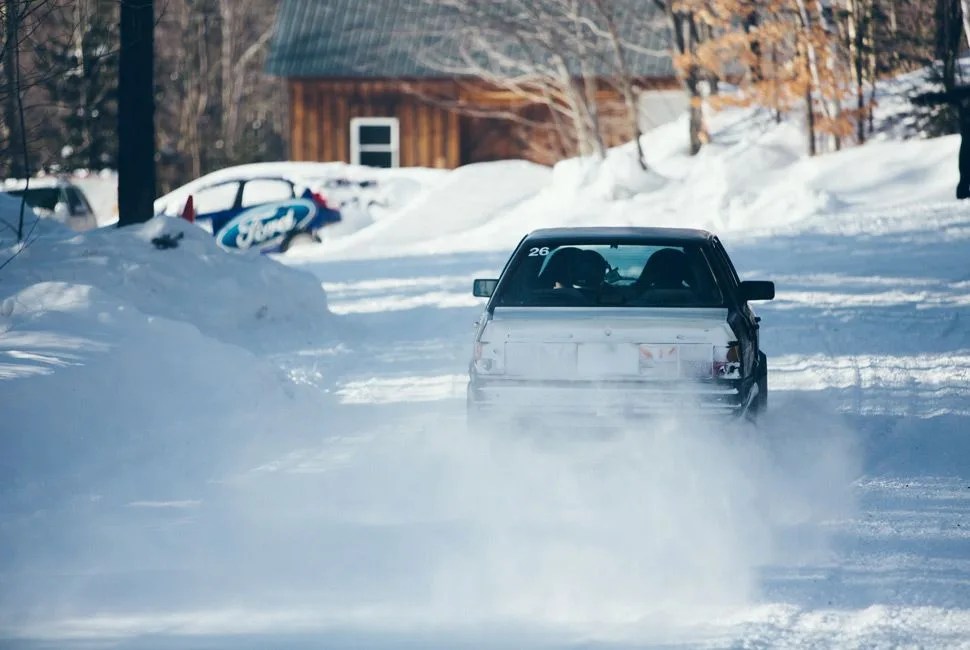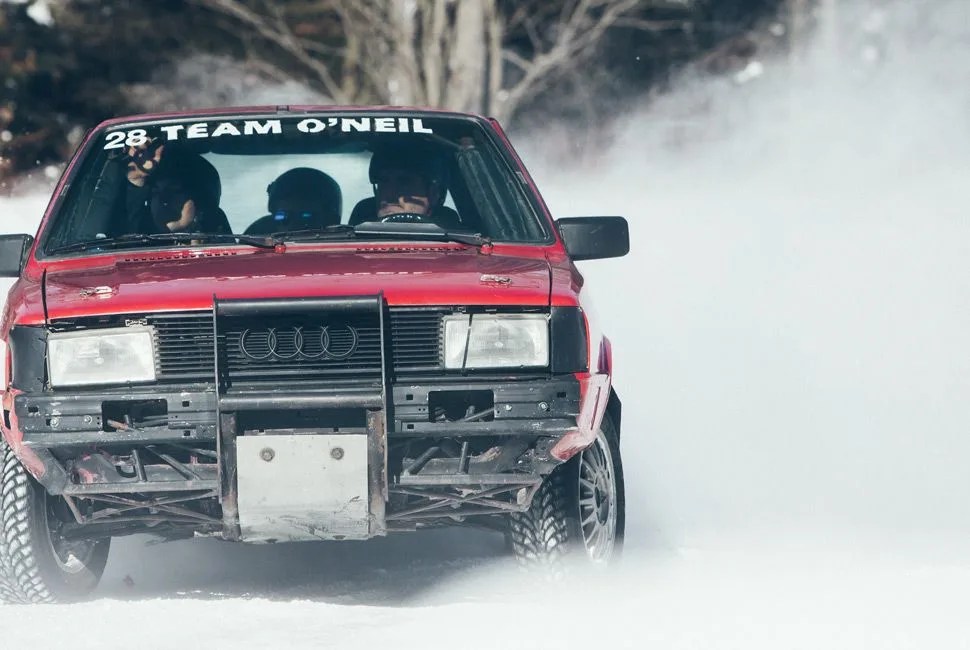Though an affordable older car is a great way to spare your shiny performance car the pains of driving through winter, it can also make for fun and safe winter conveyance. Ironically, beaters make great winter cars because they lack many of today’s standard safety features. “ABS brakes can take twice as long to get a car stopped on snow than a halfway decent driver without them,” says Wyatt Knox, special projects director at Team O’Neil Rally School and Rally America 2WD National Champion. “Traction Control will cut your engine power or apply brakes when it senses spinning wheels, such as when you try to drive up a hill, meaning you might not make it and could potentially go sliding back down. Without these systems you know what you’ve got. You know exactly what the car will do when you give it a specific input, you quickly learn what it can and can’t do, then just operate within those boundaries and you’re fine.”
Knox also notes that while four- and all-wheel drive are great advancements, they aren’t the be-all-end-all for winter driving. Proof positive is his personal choice of car, a 1996 Mazda Miata, which he uses year-round — yes, even in the winter, in New Hampshire. “I guess I’ve always just liked the challenge of getting around with only two-wheel-drive. It makes you think more, work harder, plan ahead, be smooth, and you really don’t get away with too many mistakes. It’s great training,” said Knox. “You also slide around more, which is always good entertainment.”
Should you decide to tackle winter in an older car, it’s best to be prepared. Understand the importance of knowing how your car reacts in the snow, and, equally importantly, be open to doing a little wrenching (or pay for someone to do the wrenching for you). Knox shared some tips for getting any old car ready for the imminent snowfall.
First and foremost: tires. “Number one will always be acquiring the best possible winter tires that you can find and afford, mounting them to all four wheels,” says Knox. Winter tires are thinner, taller sidewalls and rubber compounds that offer more grip in low temperatures — if you’re going to do one thing for winter, make it a tire upgrade. But Knox notes traction goes beyond just having the right tires. “Tire pressure changes about one psi per ten degrees, so if you set your tires at thirty-two psi on a sixty-degree day, you might be surprised to see that on a zero-degree morning they only have twenty-six psi in them. If you take a corner hard or get right up to highway speeds, that tire could easily have a catastrophic failure.”
Winterize your car. There are tons of little things you can do to make your car operate optimally in low temperatures. Knox suggests topping of the anti-freeze, swapping oil to a thinner viscosity, mounting winter windshield wiper blades and adding de-icing washer fluid. Knox also highly recommends making sure the car is caught up with regular maintenance before wintertime. “If your car breaks down at night on a back road, it can turn into a legitimate survival situation pretty quickly. ”

Pack a survival kit. In case you do get stranded, pack a duffle with some essentials: a first aid kit, blankets, extra winter clothes, matches, flashlight, tow straps, jumper cables, an extra phone charger, road salt and/or traction mats and water and snacks. “The peace of mind alone is worth the effort,” says Knox.
